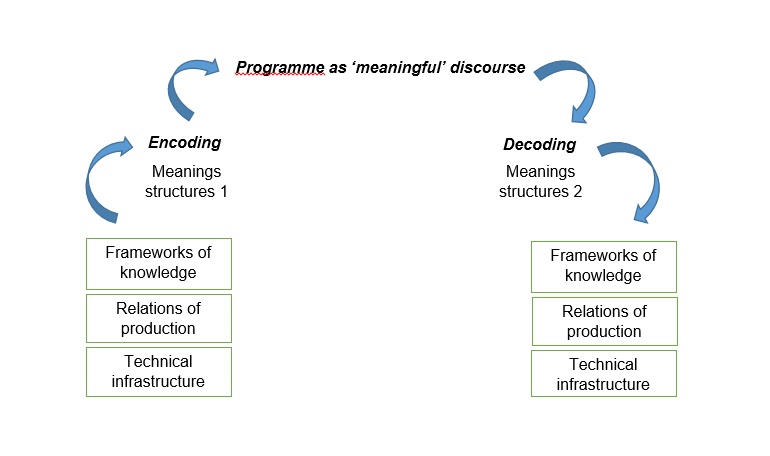Ideological Criticism, Cultural Studies (Discussion)
From Screenpedia
Revision as of 16:34, 12 November 2020 by Jeremy Butler (talk | contribs) (outlined; removed production studies question)
Decoding (or reading) a text
- Group 1: Perform a dominant-hegemonic decoding of My So-Called Life. What would be the result of your reading in terms of representations of gender and sexuality, ethnicity, and youth (vs. middle age)?
- Group 2: Perform a oppositional decoding of My So-Called Life. What would be the result of your reading in terms of representations of gender and sexuality, ethnicity, and youth (vs. middle age)?
- Group 3: Perform a negotiated decoding of My So-Called Life. What would be the result of your reading in terms of representations of gender and sexuality, ethnicity, and youth (vs. middle age)?
- Group 4: What do you feel is the preferred reading of this episode? What is the preferred reading in terms of representations of gender and sexuality, ethnicity, and youth (vs. middle age)? ("Hall and others often presume that the preferred reading encoded on the text by the television apparatus will be from the dominant position," but in this case it probably is not.)
Thompson & Mittell, How to Watch Television
- Question from Ritesh Mehta, "Master of None: Negotiated Decoding"
Strengths/weaknesses
List two strength(s) of ideological criticism, cultural studies and/or production studies. List two weaknesses of these approaches. Answers in boldface are the best ones. Email them to jbutler@ua.edu .
- Group 1 on production studies:
- S:
- W:
- Group 2 on Stuart Hall:
- S:
- W:
- Group 3 on Stuart Hall:
- S:
- W:
- Group 4 on production studies:
- S:
- W:
Bibliography
- Jeremy G. Butler, Television: Visual Storytelling and Screen Culture (NY: Routledge, 2018).
- Ethan Thompson & Jason Mittell, eds., How to Watch Television, second edition (2020):
- Ritesh Mehta, "Master of None: Negotiated Decoding," second edition, 144-152.

